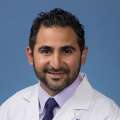The biological clock is real.
Scientifically, the biological clock refers to circadian rhythms that in living organisms.
Colloquially, though, the biological clock is about fertility, particularly for women. Social expectations notwithstanding, human biology dictates that chances of pregnancy decrease with age, as the number of eggs and the viability of those eggs diminish as a woman nears 40.
“This is a natural process,” says Zain Al-Safi, MD, an obstetrician-gynecologist who specializes in reproductive endocrinology and infertility.
“We live way longer than our ancestors did. The ovaries are designed to be done with reproduction by age 44, 45 maybe,” Dr. Al-Safi says. “So now that women live longer — like double that age — biology just didn’t catch up. For women, we see a gradual decrease in pregnancy rates after age 32, then after age 35 to 37 it becomes more pronounced.”
What causes pregnancy rates to decline with age?
Two main factors cause pregnancy rates to diminish as women age, Dr. Al-Safi says.
First is a decrease in the number of available eggs, or oocytes. Female babies are born with all the eggs they will ever have, typically around one or two million at birth. By the time a girl reaches puberty, however, the number is more like 300,000. A gradual decline in available eggs continues until menopause.
Most of these eggs are not lost through ovulation, Dr. Al-Safi says, but through a process called atresia, whereby oocytes naturally degenerate before making it to the ovulation stage. As a woman ages, the eggs lost through atresia may increase, he says.
But it’s not the quantity of available eggs that most affects pregnancy rates, Dr. Al-Safi says. Rather, it’s the quality — aging eggs don’t behave as consistently as younger eggs when it comes to cellular division.
Just before ovulation, the egg cell should divide, he explains. As a single cell, the egg has 46 chromosomes. It should divide to have 23, so it might be fertilized by a sperm also containing 23 chromosomes to form an embryo with 46 chromosomes. Age can affect the division process, Dr. Al-Safi says.

“That separation may not happen properly, so that egg may end up having more chromosomes or less chromosomes,” he says. “So when it’s fertilized by a 23-chromosome sperm, the resulting number is not going to be 46.
“Most of these embryos will not implant into the uterus, which is why pregnancy rates will decrease with age. Some of them may implant but result in a miscarriage, which is significant because that also increases with age. So both of these would result in reduction of live birth with reproductive age.”
Age can also affect a woman’s fertility less directly, Dr. Al-Safi says, as conditions such as uterine fibroids, endometriosis, adenomyosis or exposure to treatments such as chemotherapy that affect the ovaries are also more likely as women get older.
How does paternal age affect pregnancy?
Paternal age matters when it comes to creating a healthy baby, too. Aging affects sperm quality and quantity, Dr. Al-Safi says.
“We definitely see changes in the semen analysis with age,” he says. “The concentration motility — that’s the movement of the sperm — and the normal shape, the morphology, would be affected with age. But the effect on chances of pregnancy? It’s there, but it’s not as pronounced.”
Instead, Dr. Al-Safi says, advanced paternal age, typically considered to be 50 and older, can increase the risk of some genetic conditions, such as dwarfism, as well as some increase in risk of miscarriage, due to changes in sperm quality. Risk of psychiatric illnesses, such as schizophrenia, may increase in offspring from older men, he adds. Advanced paternal age is also associated with .
Is there an optimal age to start a family?
While peak fertility for women is generally before age 32, Dr. Al-Safi acknowledges that not everyone is ready to start a family then.
Women in their 20s or 30s who plan to postpone pregnancy for a number of years might consider . Those frozen eggs or embryos can be used at a later time and result in successful pregnancy, Dr. Al-Safi says.
Women who don’t freeze eggs or embryos and decide to become pregnant in their 40s still have options, he says. If natural pregnancy isn’t possible fertility treatments such as in vitro fertilization (IVF) using their own eggs can increase the chances of pregnancy, when a chromosomally normal embryo is available, otherwise they may consider using eggs from a younger donor, which significantly increases pregnancy rates.
“If she did have an embryo that was chromosomally normal, then the chances of pregnancy would be close to a 30-year-old who had a transfer of a chromosomally normal embryo,” he says. “I would expect the pregnancy rates to be close when I’m transferring that embryo whether the recipient was a 44-year-old or a 30-year-old, as long as the uterus is otherwise normal.”
Dr. Al-Safi notes, however, that the fertility center at UCLA does not recommend or offer new IVF treatments to women older than 46 using their own eggs, because the chance of pregnancy would be too low to justify the treatments and egg harvesting required for IVF.
Women who are older during pregnancy may also be at risk of other complications, Dr. Al-Safi says, such as high blood pressure or diabetes during pregnancy and pre-term birth.
While the biological clock is a natural phenomenon, fertility preservation techniques can bend time a little. Still, odds of pregnancy are best before the clock winds down.
“What we advise couples,” Dr. Al-Safi says, “is you should start trying to conceive as early as you are ready.”
Learn more about services provided through the UCLA Fertility and Reproductive Health Center.




